
Douglass home celebrates rights pioneer
WASHINGTON, D.C. — Nestled in the heart of the Anacostia Historic District lies the infrequently visited home of one of the most important Americans in U.S. history.
The Frederick Douglass National Historic Site at Cedar Hill, may not be high on the list of “Things to Do” for most of the area’s tourists, but the attraction should rank high on visitor’s “Things you should Do” list.
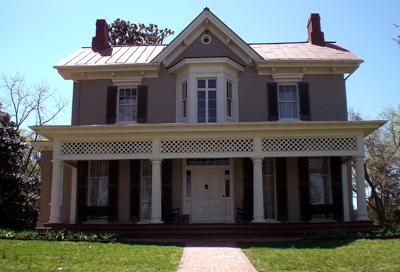 |
The front view of the Douglass home. The home was recently painted beige from white in the last few years (Photo by David Lake). |
Each year, 35,000 to 40,000 people visit the site. They take away an authentic impression of the civil-rights pioneer’s life. More than a century after his death in 1895, the story of Douglass’ remarkable journey out of slavery and into society continues to inspire.
The multifaceted life of Frederick Douglass is a truly amazing story of a man who fought for freedom and equality of all people. The accomplishments of Douglass are numerous: an escaped slave, abolitionist, women’s rights activist, orator, author and newspaper editor.
Visitors of the Washington area need to make it a requirement to visit Cedar Hill and learn more about this American hero.
“I am so glad that I am able to teach and expose my grandson to Frederick Douglass,” Susan Knost, 61 of Baltimore said of eight-year-old Joel. “All Americans, not just African-Americans, should know the legacy of Frederick Douglass as they know the legacy of Martin Luther King Jr.”
At age eight, Douglass was sent to Baltimore as a house servant. He became fascinated with the “mystery of reading” and decided that education was the “pathway from slavery to freedom.”
Because it was illegal to educate slaves, Douglass learned how to read and write by treading bread for reading lessons and tracing over words in discarded spelling books until his handwriting was smooth and graceful. By age 13, he was reading articles about the abolition of slavery to other slaves.
| Frederick Douglass’s “Growlery” is where he would go to work and escape the rigors of domestic life (Photo by David Lake). | 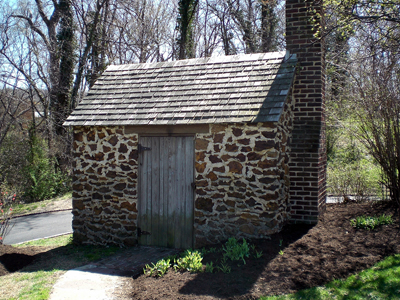 |
When he escaped to freedom at age 20, Douglass eagerly used his hard-earned, self-taught wisdom to lecture against slavery and fight for the emancipation of blacks, women and oppressed people.
The site was listed on the 10 most-endangered park areas list in 2001 because of a leaking tin roof that was more than 100 years old and a faulty heating and cooling system that could no longer preserve many of Douglass’ 1,200 delicate books.
After three years of renovations costing $2.7 million, the home appears just as it did in 1895 when Douglass died. The exterior of the two-story house is now dark beige after having a white exterior since 1963.
“The renovations have greatly improved the quality and longevity of the house,” Park Ranger Eola Dance said. “It now exists to look like it did when Mr. Douglass lived here and hopefully more people will come visit this hidden gem in the Washington area.”
The large, charming house is fronted by a wide, columned porch. The landscaping of the home is made up primarily of Cedar trees. The home is built on a hill which is 65 steps from the street or 55 feet above street-level.
Douglass was nearly 60 years old on Sept. 1, 1877, when he moved to the 1850s house with his first wife Anna. Douglass used the home to be a place of rest after battling for human rights for more than 40 years.
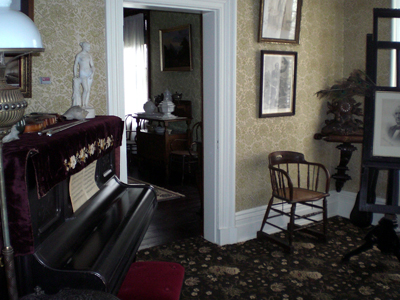 |
The East parlor is where Douglass would entertain guests by playing music. Even those who didn’t want to participate were convinced by Douglass to play the tambourine (Photo by David Lake). |
He purchased this 21-room Victorian mansion from money he earned giving speeches. The home was set on nine acres in an affluent area of Washington, D.C., and Douglass was the first nonwhite resident in the neighborhood. He called his home Cedar Hill for the trees growing in the lawn.
After Douglass died in 1895 at the age of 77, Douglass’ second wife, Helen, vigorously preserved Cedar Hill as his memorial. She organized the Frederick Douglass Memorial and Historical Association in 1900. In 1962, the care of Cedar Hill was entrusted to the National Park Service.
The tour of Cedar Hill begins at the front porch and takes groups of 10 persons on a 45-minute tour.
Throughout the home, Douglass exhibited belongings that measured his social and political success: Abraham Lincoln’s cane, that given to Douglass by Mrs. Lincoln after the assassination is there. A leather rocking chair from the people of Haiti and a hand-carved German clock that was the gift of admirer Ottilia Assing are also on display.
Along with several portraits of Douglass are images of Abraham Lincoln and the family of abolitionist John Brown. Testifying to Douglass’ musical interests are a piano and his own violin. Douglass’ guests dined on the finest Limoges china and took tea from a sterling-silver service that was a gift from Queen Victoria.
In the east parlor, Douglass challenged guests to checkers on a board that he carved himself. The room’s wallpaper features a pattern of hand-stenciled palms, a motif inspired by Douglass’ term as ambassador to Haiti.
| The East Parlor desk where Frederick Douglass often worked. It was a gift from American writer Harriet Beecher Stowe (Photo by David Lake). | 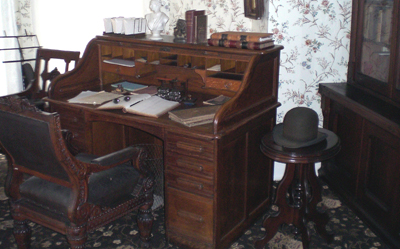 |
Positioned against a wall is a small writing desk that was a gift from Uncle Tom’s Cabin author Harriet Beecher Stowe.
“What couldn’t Frederick Douglass do and who didn’t he know?” exclaimed Francis Parker of San Francisco after walking through the parlor. “It is amazing how far his speeches and writings reached around the world in an age when the telephone was barely around and the Internet didn’t exist.”
His books were his most beloved treasure and Douglass spent much of his time in the library or in the outdoor “Growlery” reading about politics, philosophy and law. The home contains a library of more than 1,200 books.
Douglass created his own “Growlery” out back behind his home, just beyond the croquet court. A reconstruction of it stands on the property today, a tiny, windowless, one-room structure where Douglass could retreat from the main house he shared with his wife, as well as their visiting children and grandchildren.
“When am I going to get one of those,” Randy Smith of Scranton, Pa., joked to his wife Beverly about the Growlery as she rolled her eyes.
On the second floor of Cedar Hill, bedrooms fill the second floor and attic. One contains a small desk that was a gift from Harriet Beecher Stowe. Anna’s room was never used again after she died there. Helen had a room across from her husband’s.
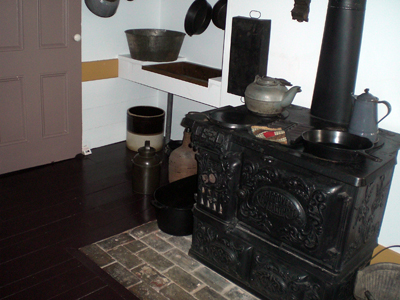 |
The kitchen and its stove of the Douglass home (Photo by David Lake). |
In Douglass’s room a shirt, shoes, gloves and waistcoat are laid out as if waiting to be filled out by his imposing six-foot frame. Barbells lie on the floor next to a chair. From the small desk in front of a window Douglass looked out at the same magnolia and oak trees that are seen today. Toiletries lie on a washstand; the pillow cases are embroidered with the words: “Two’s company, three’s a crowd.”
The view of the Capitol Building from the second story on the northwest corner of the restored home is reputed as one of the best in the Washington area. The panorama of a sprawling Washington is hidden behind a stand of oak and sweet gum trees. Within the branches of these trees, though, is a natural window that frames a lovely view of the Capitol Dome. “Wow,” all of the visitors on the tour said as they looked out the window.
Frederick Douglass’ Cedar Hill residence is striking testament to the great abolitionist’s perseverance and personal success. The white brick Victorian manor that crowns the estate’s summit should also be seen as a crowning achievement of an extraordinary life.
If You Go
- All activities, including tours of Cedar Hill, the grounds and the Growlery, begin at the Visitor Center at the base of the hill. At the Visitor Center, visitors will find exhibits and a film that tells of Douglass’ life as well as items pertaining to Douglass and African American culture.
- All group tours must be arranged in advance. Cedar Hill is open daily except Thanksgiving, Christmas and New Year’s Day. The site is open from 9 a.m. to 5 p.m. during the spring and summer seasons and 9 a.m. to 4 p.m. in the winter and fall seasons.
- The home can only be viewed by tour, which costs $1.50. To book a tour or for more information, call 202-426-5961.
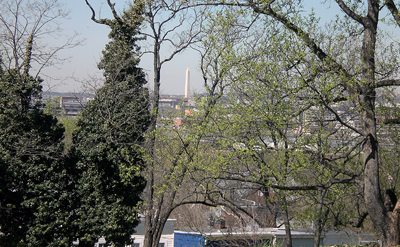 The 75-minute tour begins in the Visitor’s Center where you can browse the bookshop and learn more about Douglass by reading quotations from his speeches and writings or peruse a brief history of his life, which is posted on the wall.
The 75-minute tour begins in the Visitor’s Center where you can browse the bookshop and learn more about Douglass by reading quotations from his speeches and writings or peruse a brief history of his life, which is posted on the wall.- The 17-minute film covers Douglass’ life, from his birth into slavery in southern Maryland in 1818 until his death in 1895.
- After the film, a park ranger leads you up five stories of stairs to Cedar Hill. Before you enter the house, take in the panoramic view of Washington, where Douglass resided from 1877 until his death. Many of Douglass’ possessions, including his checkerboard, music boxes and printing presses, have been removed for restoration, but photos of the furnished rooms are on view.
Getting There
- By car: From the National Mall, go south on 9th Street to I-395 north exit onto I-295 south across bridge, and exit onto M
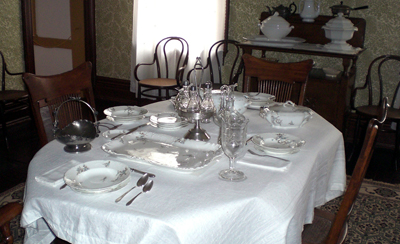 artin Luther King Jr. Avenue. Turn left on W Street SE and go three blocks to parking lot.
artin Luther King Jr. Avenue. Turn left on W Street SE and go three blocks to parking lot. - From I-495 / I-95, take Exit 3 north onto Indian Head Highway (Maryland State Route 210), which becomes South Capitol Street, bear right on Martin Luther King, Jr., Avenue, turn right on W Street to the parking lot.
- By Metro: From the Howard Road Green Line Metro take the Mt. Rainer B-2 bus to the park.

Comments are Closed